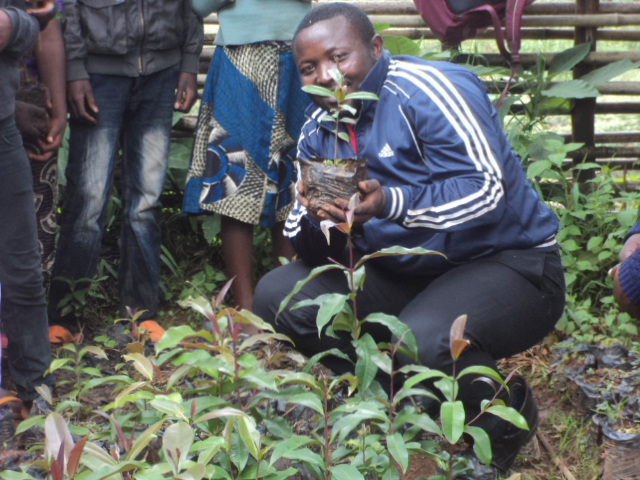

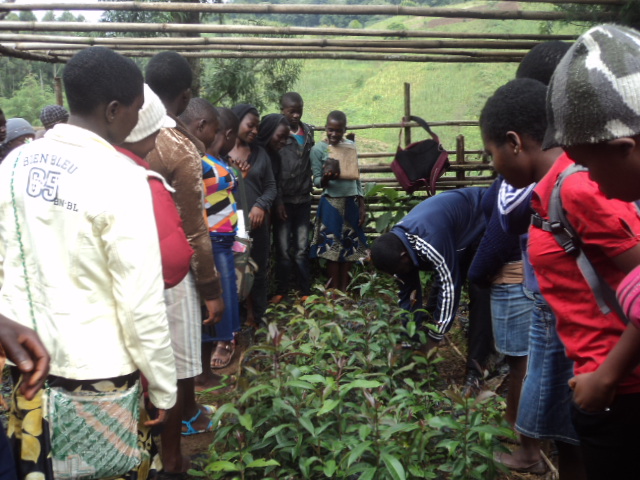
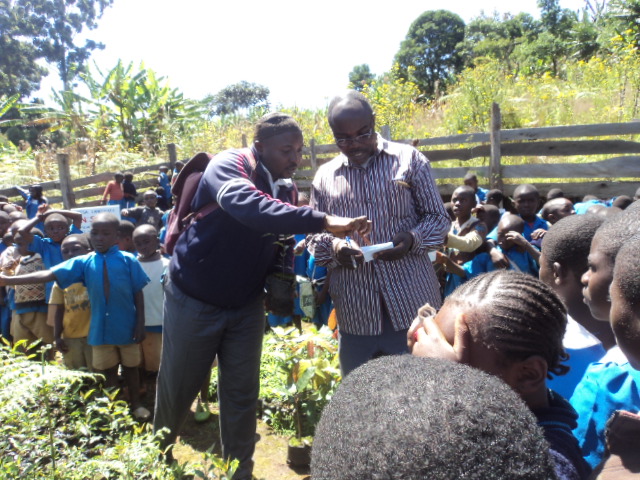
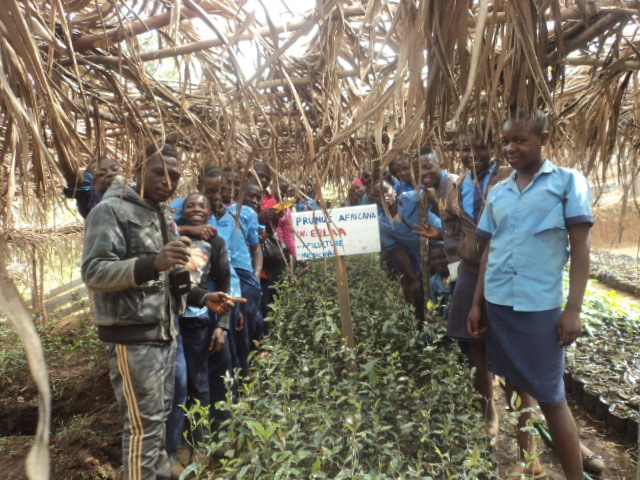
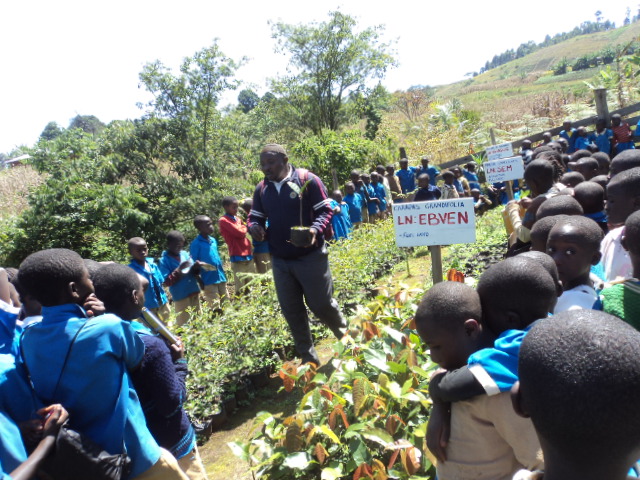
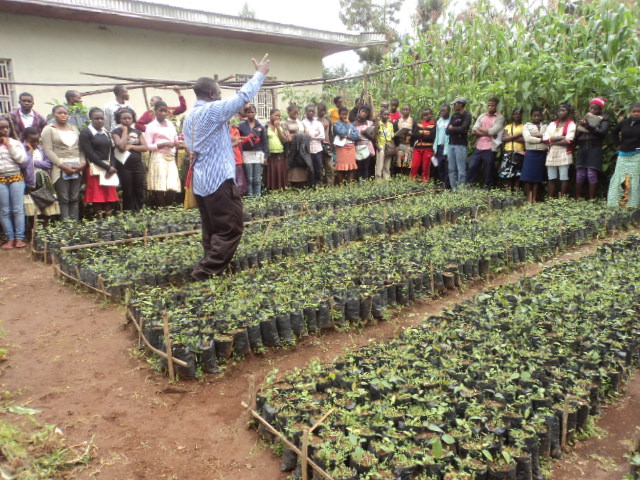
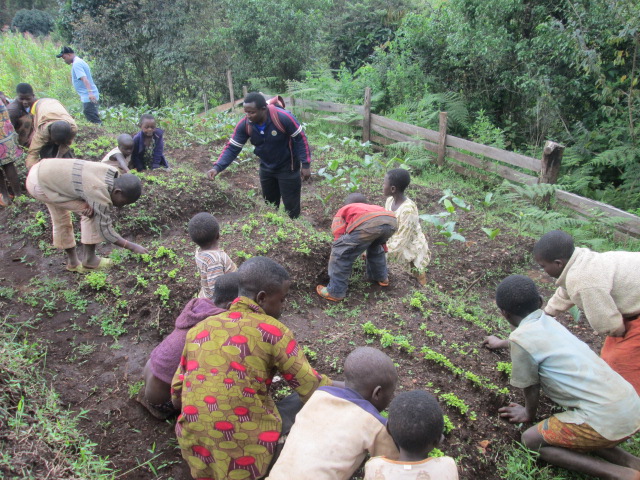
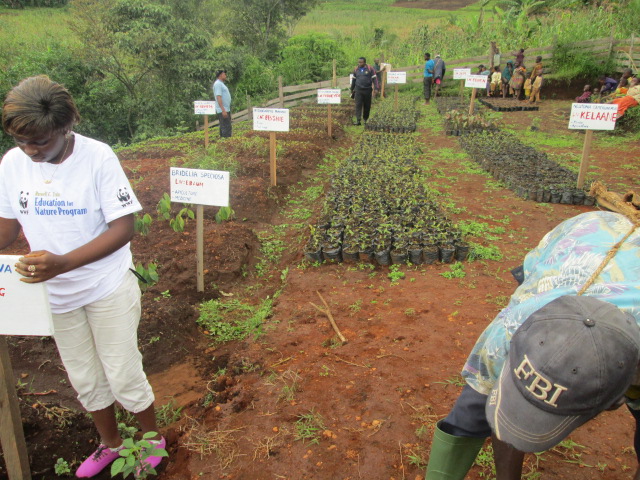
Nursery development is part of forest regeneration and environmental education. CAMGEW presently has 3 tree nurseries located in three sites in Oku (Manchok, Mbockenghas and Ikal) with a capacity of about 200.000 native bee-loving trees. The nursery at Manchok has been existing since 2011. The trees in the nurseries include: Prunus africana, Carapas, Nuxia, Pittosporum veridiflorium, Agauria salicifolia, Zyzigium staundtii, Solanecio mannii, Croton macrotachyst, Maesa lanceolata, Newtonia camerunensis, Bridelia speciosa, Psychotria penducularis and some agroforestry trees like Acacia, Leuceana, etc. These trees are labelled with scientific names, local names and their uses. Our nurseries served as:
*learning grounds for children, schools and community members on nursery development, types of forest trees, need for forest regeneration, etc
*Sites where trees are nursed and planted in the forest
These nurseries are fenced with live and dead fences. They are watered and shaded in the dry season. Weeding is done regularly. CAMGEW nurseries also need to be sustained after trees are planted. Our nurseries serve as co-financing for most projects.
The nurseries have a variety of trees that are labelled with scientific, common and local names. This has promoted learning by community members with or without CAMGEW.
CAMGEW do not lack trees for plantig each year, even if there is no funding
Many endangered trees like Newtonia camerunensis are nursed and planted in the forest
Community members and youths learn-by-doing in nursery development by fencing, watering, shading and weeding the nursery.
Many community members have learned names of various trees through the nursery.
Our nurseries are used by schools for practical lessons
CAMGEW is no more seen as a foreign organisation, because nursery development is considered a permanent activity.
Youths are becoming nature lovers as we instill in them the spirit to live in harmony with nature.
The old generation is changing their atitude towards the forest as they see the pains it takes to nurse a tree to maturity